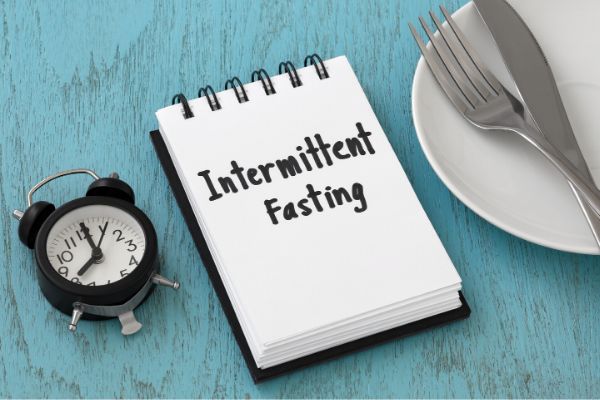The Fast Diet also known as The 5:2 Diet, is currently the most popular intermittent fasting diet. It was popularized by British doctor and journalist Michael Mosley.
The is based on a principle where you eat normally for five days a week and fast on the other two days (you must restrict calories to 500–600 per day). This diet is actually more of an eating pattern than a diet. There are no requirements about which foods to eat, but rather when you should eat them.
On top of losing weight, fans claim the 5:2 diet has been said to improve lifespan and brain function and protect against conditions such as dementia and Alzheimer’s.
However, evidence on the effectiveness of the 5:2 Diet is limited when compared with other types of weight loss techniques. One 2010 study found women placed on a 5:2 diet achieved similar levels of weight loss to women on a calorie-controlled diet, and were also less likely to develop chronic diseases such as type 2 diabetes. There is some evidence that the 5:2 model may help lower the risk of certain obesity-related cancers, such as breast cancer.
Pros of Fasting
Sticking to a regimen for two days a week is more achievable than seven days, so you are more likely to persevere with this way of eating and successfully lose weight. Two days a week on a restricted diet can lead to greater reductions in body fat, insulin resistance and other chronic diseases.
Cons of Fasting:
The non-restricted days do not mean unlimited feasting. While you don’t need to be as strict about your calorie consumption, you still need to make healthy choices and be physically active.
Skipping meals could make you feel dizzy, irritable, give you headaches and make it hard to concentrate, which can affect work and other daily tasks.
Other reported side effects are difficulties sleeping and daytime sleepiness, bad breath and dehydration.
A common way of planning the week is to fast on Mondays and Thursdays, with 2 or 3 small meals, then eating normally for the rest of the week.
It’s important to emphasize that eating “normally” does not mean you can eat literally anything. If you binge on junk food, then you probably won’t lose any weight, and may even gain weight.
How to Eat on Fasting Days
There Some people function best by beginning the day with a small breakfast, while others find it best to start eating as late as possible.
Generally, there are two meal patterns that people use:
- 1. Three small meals: Usually breakfast, lunch and dinner.
- 2. Two slightly bigger meals: Only lunch and dinner.
Split the calories on filling foods
Since calorie intake is limited — 500 for women and 600 for men — it makes sense to use your calorie budget wisely. Try to focus on nutritious, high-fibre, high-protein foods that will make you feel full without consuming too many calories.
Suitable fasting foods
- Soups (for example miso, tomato, vegetable) are a great option on fast days. Studies have shown that they may make you feel fuller than the same ingredients in original form, or foods with the same calorie content.
- A generous portion of vegetables
- Natural yoghurt with berries
- Boiled or scrambled eggs
- Grilled fish or lean meat
- Cauliflower rice
- Black coffee, tea, water.
There is no specific, correct way to eat on fasting days. You have to experiment and figure out what works best for you. There is no rule as to what or when you must eat on the fasting days.
Verdict:
The 5:2 is a simple way to reduce calorie intake. There are lots of versions of this diet, with some less safe than others. Many studies on intermittent fasting are short-term, involve small numbers of subjects, or are animal-based.
If you choose to follow it, choose an evidence-based plan based on healthy, balanced eating and written by a dietician, such as the “2-Day Diet”. It’s vital for your health to avoid nutritional deficiencies, dehydration and overeating on non-fast days.
Never attempt to delay or skip meals if you are pregnant, have had, or are prone to eating disorders or diabetes.



